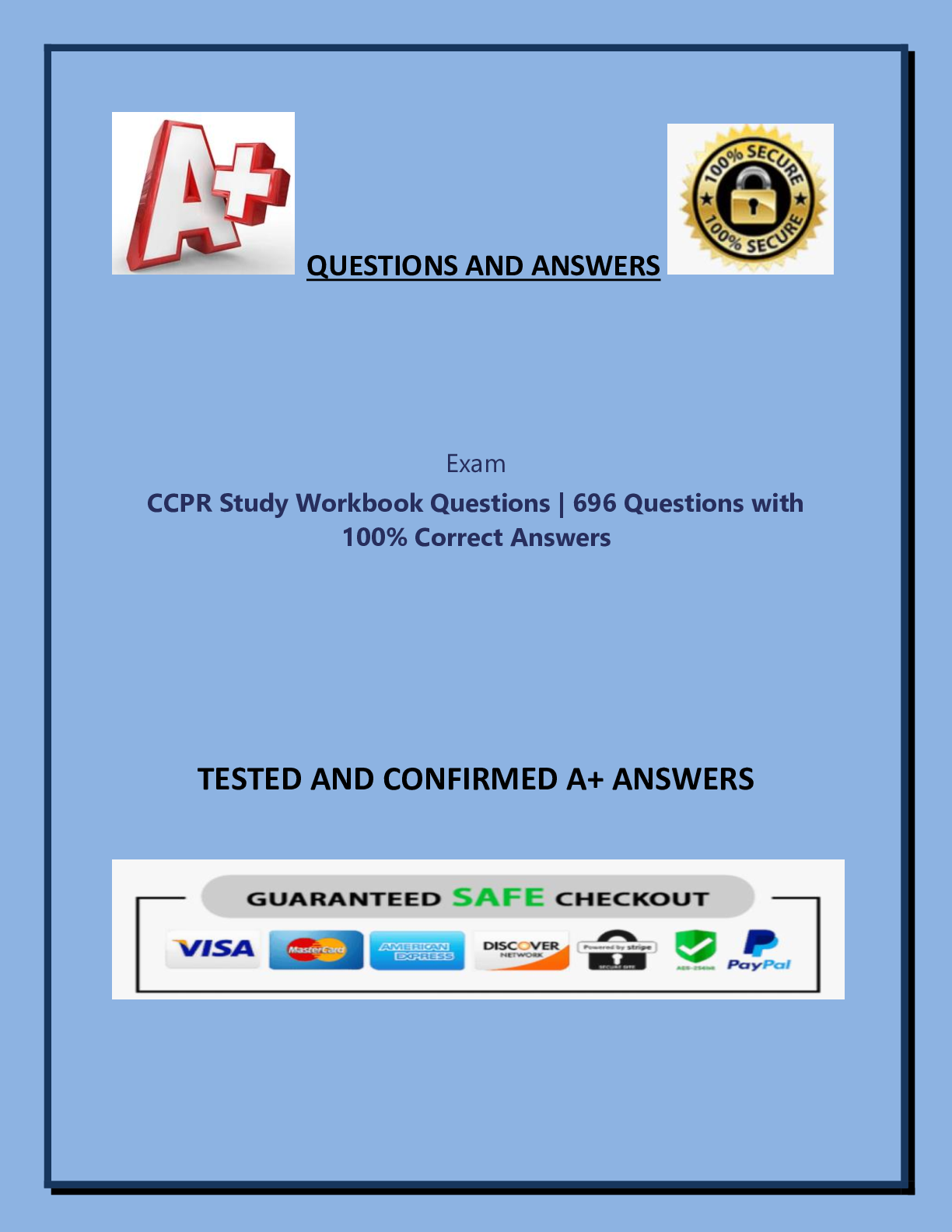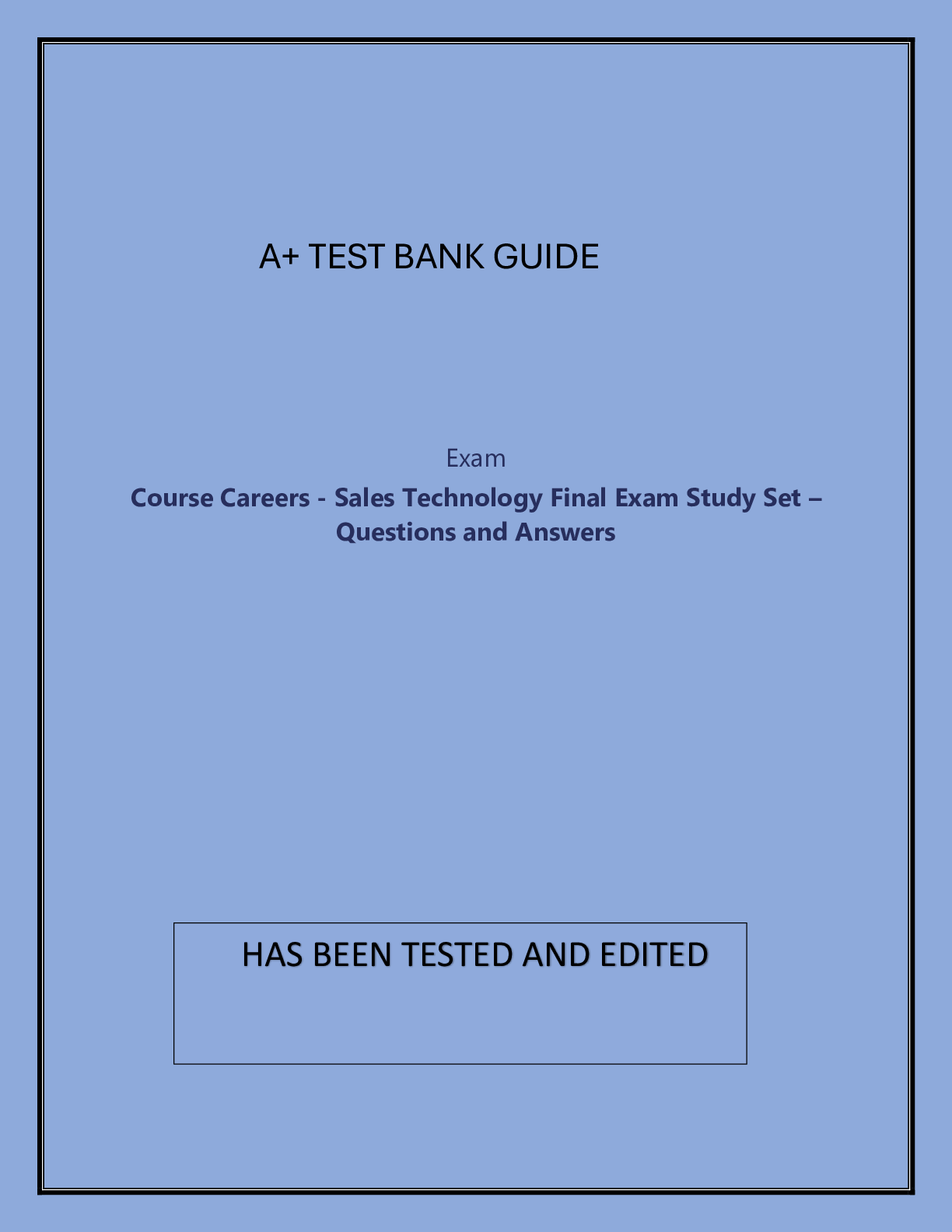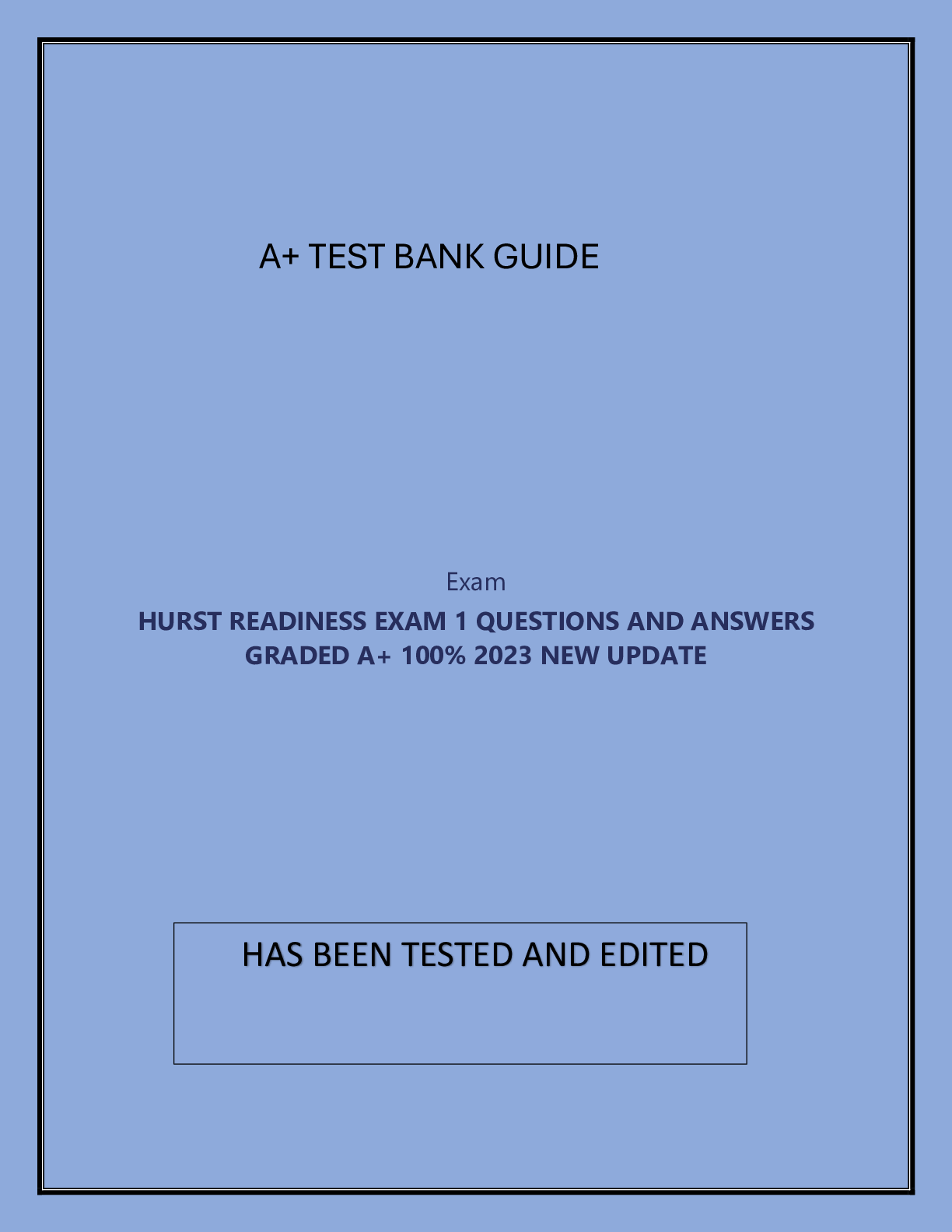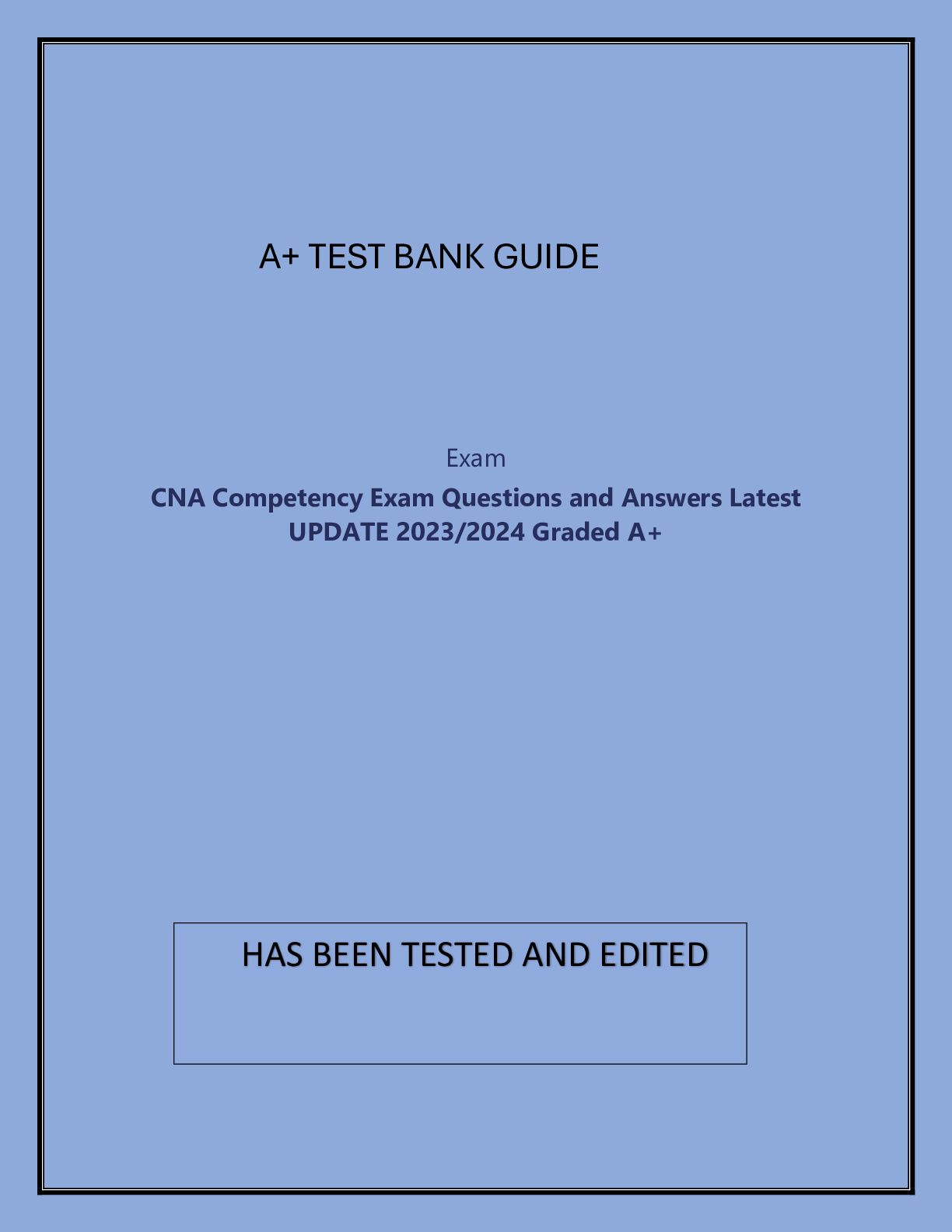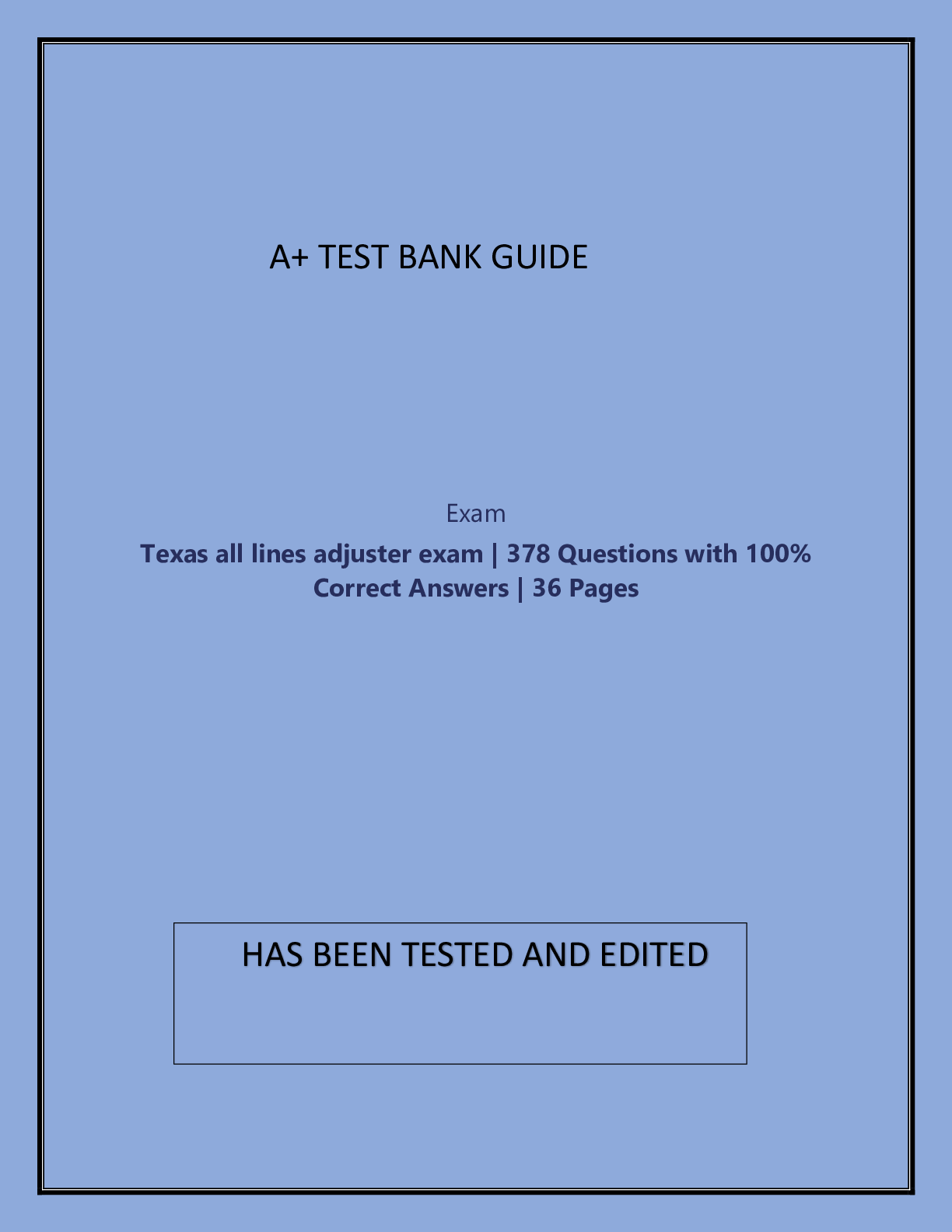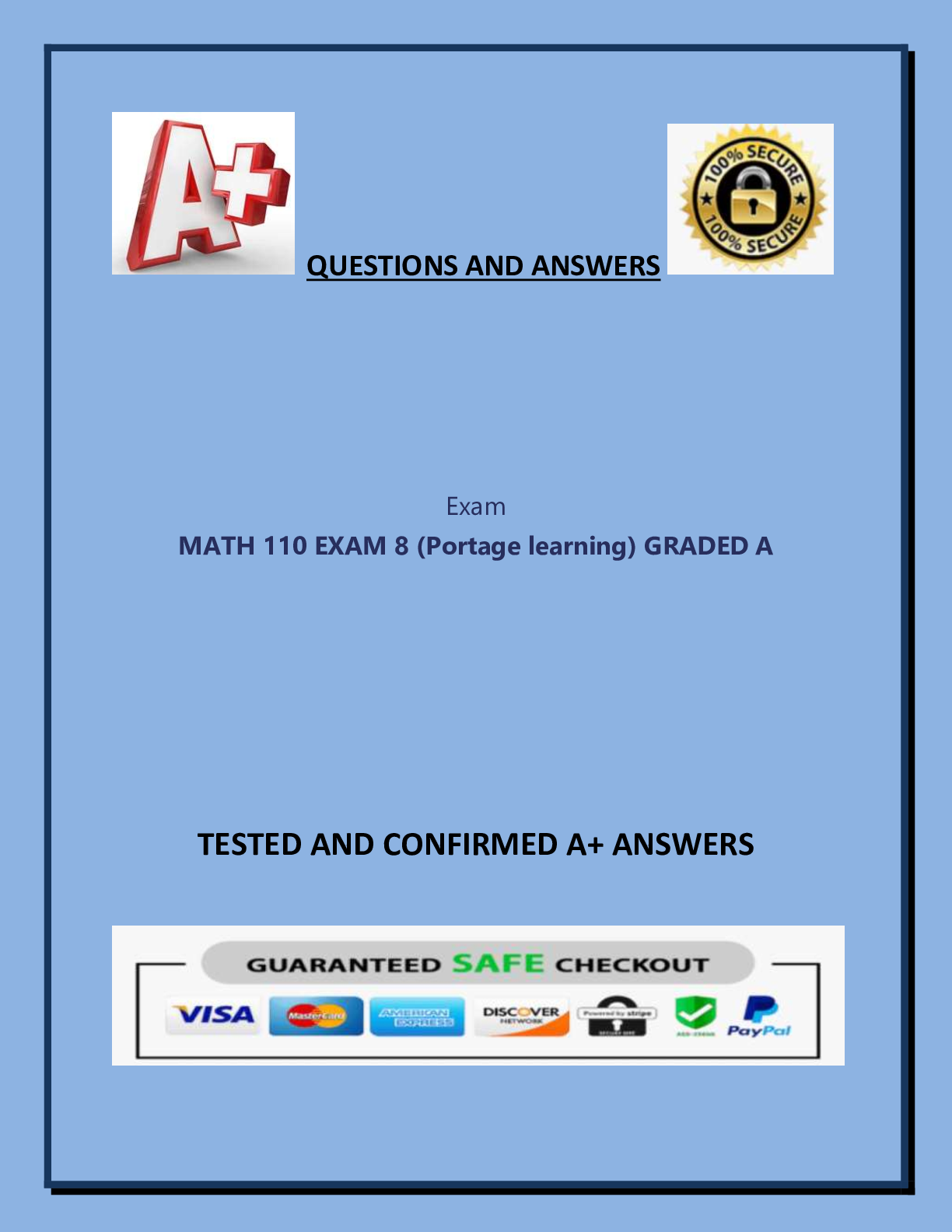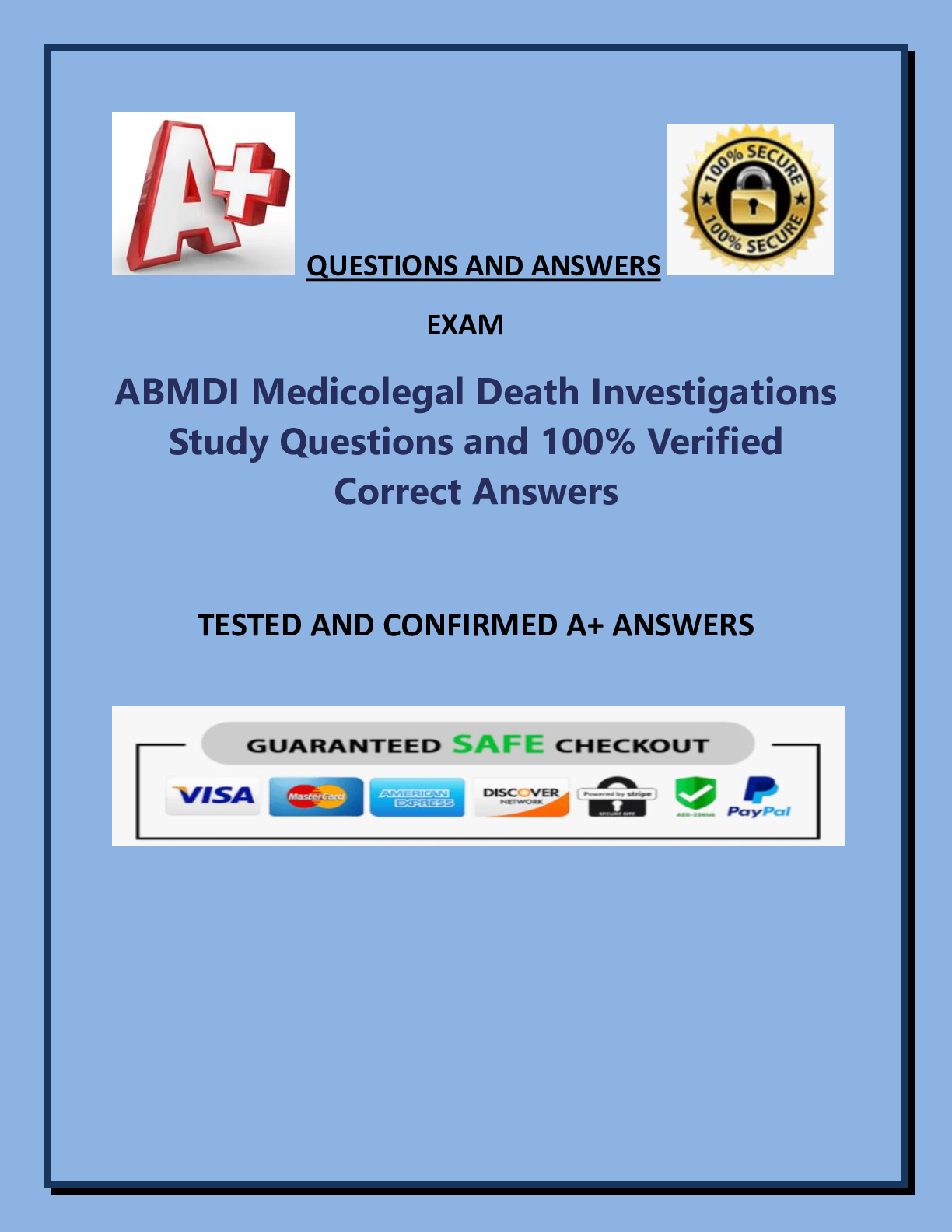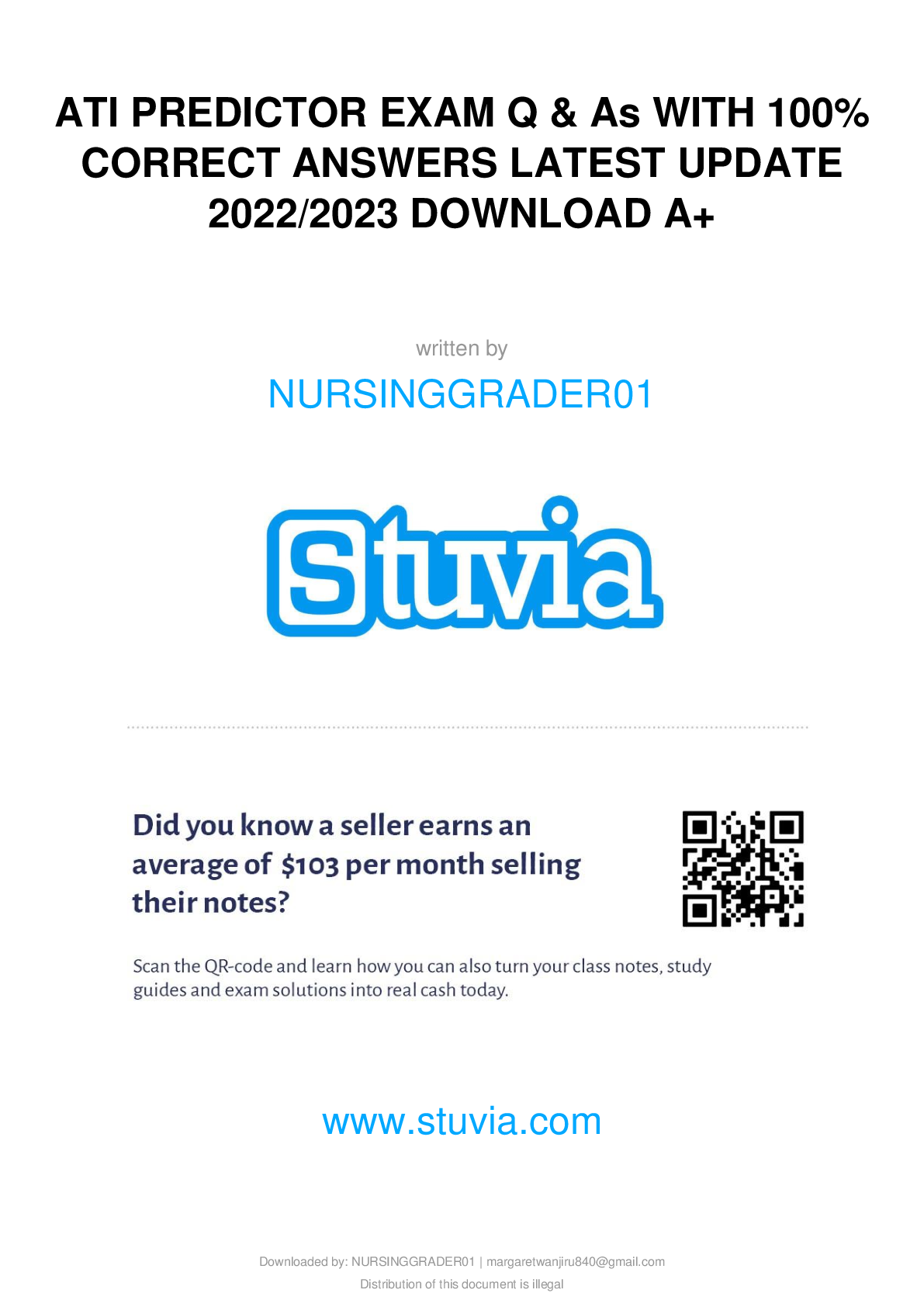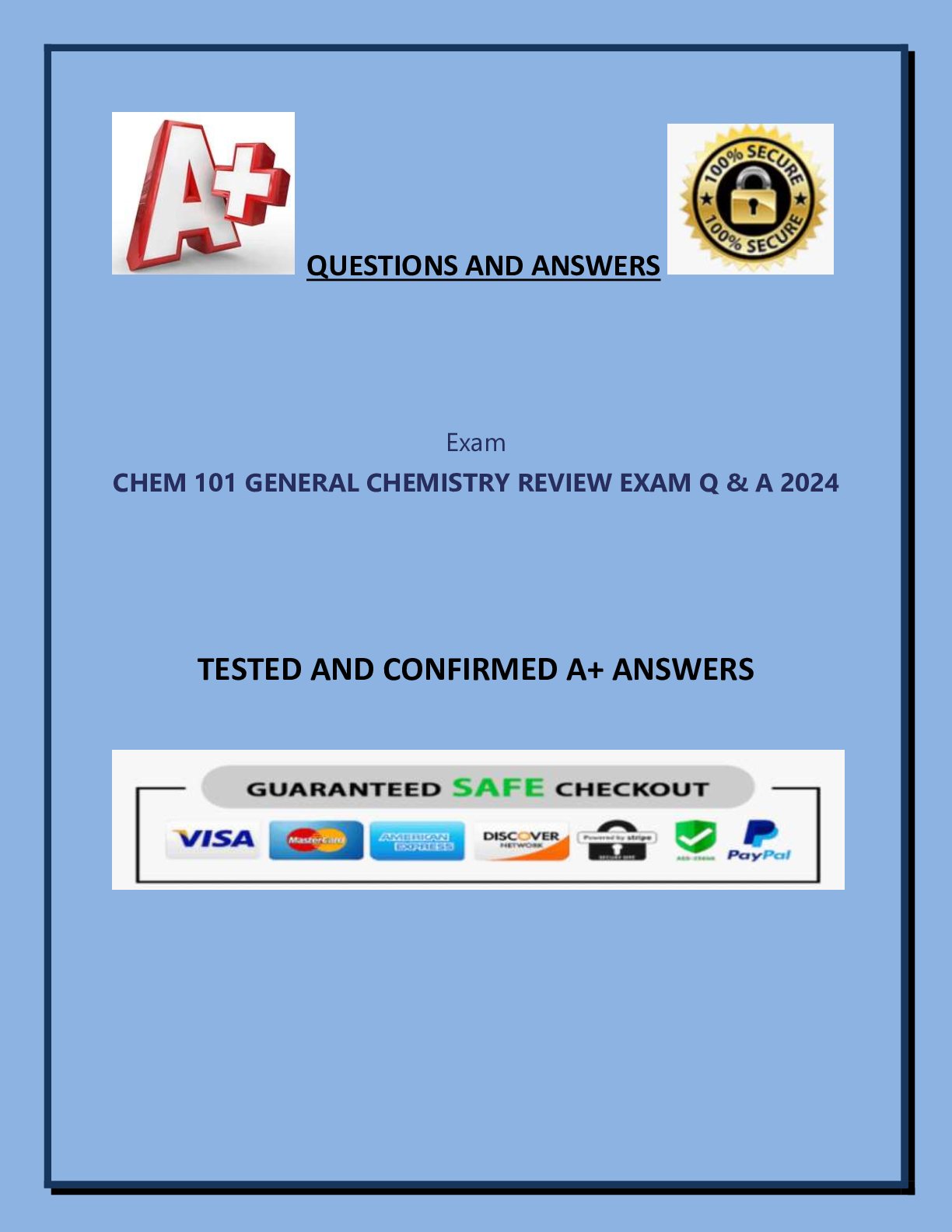*NURSING > A Level Question Paper > NURSING RENIN-ANGIOTENSIN-ALDOSTERONE SYSTEM (RAAS) REVIEW EXAM Q & A (All)
NURSING RENIN-ANGIOTENSIN-ALDOSTERONE SYSTEM (RAAS) REVIEW EXAM Q & A
Document Content and Description Below
ANGIOTENSIN- RECEPTOR BLOCKERS The renin-angiotensin-aldosterone system (RAAS) is an important regulator of blood pressure, blood volume, and fluid and electrolyte levels. Angiotensin II and aldos... terone both influence the effects of the RAAS and cause pathologic changes in heart and blood vessel tissues. Angiotensin II is a potent vasoconstrictor and stimulates aldosterone release; both of these actions increase blood pressure. Angiotensin-receptor blockers (ARBs) prevent angiotensin II from binding with target receptors, thereby blocking the actions of angiotensin II. By blocking angiotensin II actions, ARBs help to dilate veins and arterioles, prevent remodeling and hypertrophy of heart and blood vessel tissues, and decrease aldosterone release to lower blood pressure. Unlike ACE inhibitors, ARBs do not inhibit kinase II and increase levels of bradykinin in the lungs, so the cough which is a common side effect of ACE inhibitors does not occur with ARBs. Other side effects of ARBs, such as angioedema, altered renal artery perfusion, and lowered effectiveness in African-Americans, are similar to those of ACE inhibitors. What are the main actions on arteries by ARBs? Vasodilation and increased peripheral vascular resistance Vasodilation and decreased peripheral vascularresistance Vasoconstriction and increased peripheral vascular resistance Vasoconstriction and decreased peripheral vascular resistance ARBs help prevent which action? Release of sodium Release of bradykinin Release of aldosterone Absorption of aldosterone What effect do ARBs have on the excretion ofsodium and water? Increase excretion of sodium and water Decrease excretion of sodium and water Increase excretion ofsodium and decrease excretion of water Decrease excretion ofsodium and increase excretion of water • When caring for patients taking ARBs, the nurse should obtain baseline blood pressure and regularly monitor blood pressure throughout therapy. The target blood pressure is 140/90 mm Hg or lower in most patients and 130/80 mm Hg in patients with diabetes. • Patients should report shortness of breath, dizziness, and unusual fatigue immediately. • Patients with heart failure should be monitored for a decrease in symptoms. • Patients with diabetic nephropathy should be monitored for proteinuria and alterations in GFR. • ARBs are contraindicated in patients with a known drug allergy to ARBs. Patients with a history of angioedema when taking ACE inhibitors should not take ARBs, even though the risk of angioedema is lower with ARBs. Patients who develop a wheal and flare rash [Show More]
Last updated: 3 months ago
Preview 1 out of 11 pages
Instant download

Buy this document to get the full access instantly
Instant Download Access after purchase
Add to cartInstant download
Reviews( 0 )
Document information
Connected school, study & course
About the document
Uploaded On
Mar 20, 2024
Number of pages
11
Written in
Additional information
This document has been written for:
Uploaded
Mar 20, 2024
Downloads
0
Views
14

